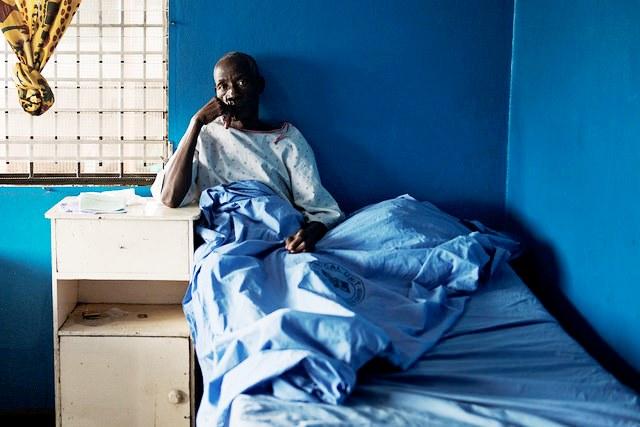Ebola survivors have seven times the disability rate of their close contacts, and the virus likely causes muscle damage.
The findings are among data from two new studies published in Clinical Infectious Diseases that observe survivors of Sierra Leone's Ebola outbreak to understand how often the disease causes disabilities and how it affects major organs.
Though both studies are small, they provide new insight into the lasting damage that Ebola virus disease (EVD) causes survivors.
Ebola and long-lasting disabilities
In the first study, researchers followed 27 Ebola survivors in Sierra Leone for 1 year after diagnosis and found they were seven times more likely than their close contacts to report a disability.
Almost 80% of the survivors (77.8%) reported a disability 1 year post-infection, compared with 11.1% of their close contacts. Disabilities included major limitations in vision, mobility, and cognition.
Disability was measured using the Washington group disability questionnaire, and the survivors were matched with 54 unaffected contacts. Mobility difficulties were the most frequent disability reported, with almost all survivors reporting musculoskeletal pain.
"This study has demonstrated that a year following acute disease, survivors of the recent EVD outbreak have higher odds of persisting disability in mobility, vision, and cognition," the authors concluded. "Mental health issues such as anxiety and depression persist in EVD survivors and must not be neglected."
Ebola virus causes muscle damage
In the other study based on EVD survivors in Sierra Leone, researchers looked at the relationship between Ebola viremia and specific organ damage. They found no evidence that Ebola virus specifically damages the liver or kidney, but they did find strong evidence to suggest that the virus destroys muscles and the body's coagulation system.
This is the first study to compare Ebola viremia to specific biomarkers, the authors said.
To conduct the study, data on biomarkers from 49 survivors and 51 non-survivors were collected and analyzed. Ten biomarkers, including bilirubin, creatinine, and Ebola viremia were used to determine which organ systems were under attack during an Ebola infection.
While it has long been assumed that Ebola, a hemorrhagic fever, causes damage to the coagulation system, little else is known about how the virus attacks organs. Though the study provided no evidence that Ebola affected the kidneys, kidney damage is often seen in Ebola patients.
The authors said this was because Ebola viremia was strongly related to evidence of rhabdomyolysis, the rapid breakdown of muscles, which stresses the kidneys.
See also:
Aug 20 Clin Infect Dis disability study
Aug 20 Clin Infect Dis organ study


















